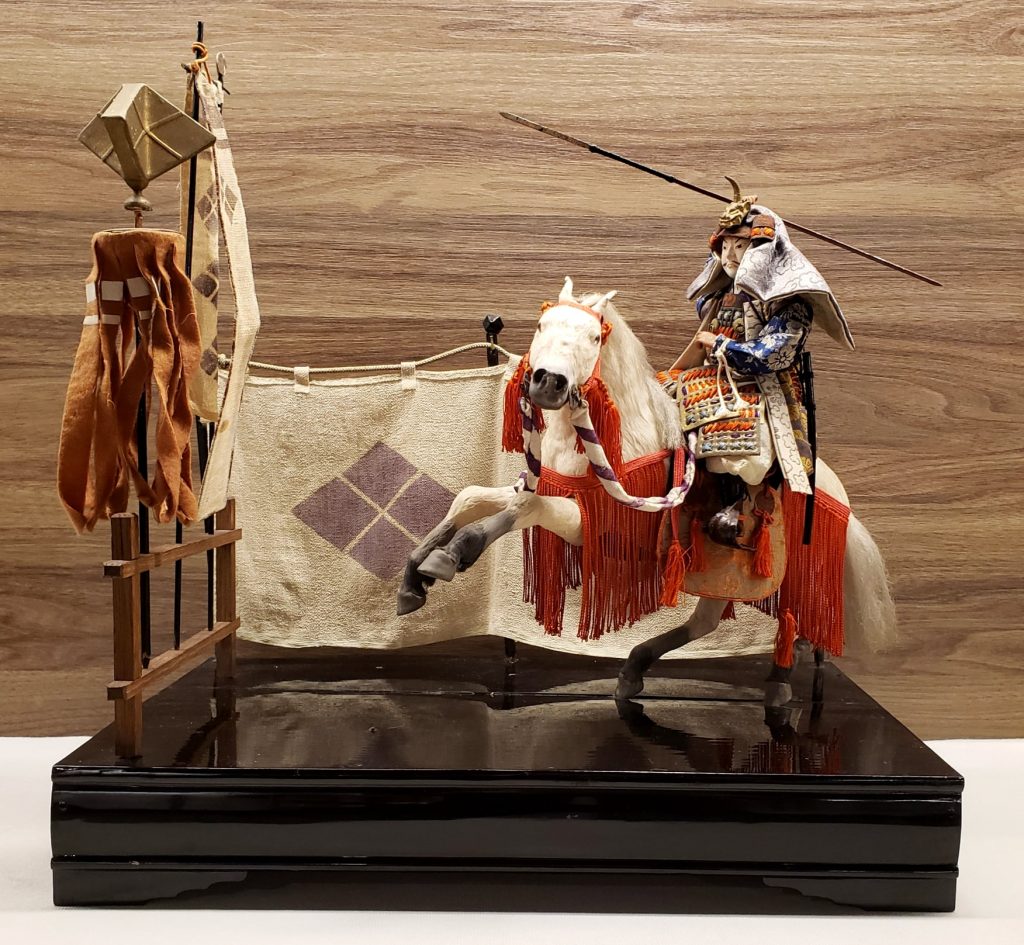
On the date that the “Girls' Day” is celebrated, in Japan, let's look at the figure of the Ningyos. To begin, we have to understand that they are not dolls for children to play, but “fetishes” on which parents focus their hope that they will have a good future.
And what are the messages they convey?
Traditional Japanese society worships very definite values for men and women. These values, that are still very ingrained, especially among older people, flow from the History and traditions that govern coexistence, at all social levels.
What are these values?
Those who define male behavior have their roots in “bushido”, which can be translated as “the warrior's path”, that is, o samurai. O Bushidō – “the Way of the Warrior” – it is both a code of conduct and a system of life that can be compared to the gentleman in the West.. It attaches great importance to certain virtues such as frugality, the loyalty, the mastery of martial arts, to honor (until death, if necessary to preserve it). The concept originated between the 11th and 14th centuries, taking shape embodied in the figure and life of the samurai, between the 12th and 16th centuries. Durante o xogunato Tokugawa (check. XIV a XIX) Bushido became the official code of conduct under Japanese Feudal Law. To these values we must add others, that are intercommunicating between men and women, like honor.
These are the values celebrated on “Children's Day” – “kodomo-no-hi”, ou “gogatsu-no-sekku” matsuri –, which traditionally takes place on the fifth day of the fifth month of the lunar calendar, corresponding to the end of May or beginning of June. fixed up, So, the day 05 de junho para o “matsuri” (festival). It is considered that during it, the puppets - which take the form of warriors, most of the time – they become the temporary shelter of the brave departed, protecting and purifying the boy and his home.
on girls' day, in turn – the “Hinamatsuri” celebrated today – 03 March – the feminine attributes are celebrated – the beauty, kindly, the good marriage - incorporated in the "hinabinas", which are dolls representing geishas, imperatrizes, Shinto priestesses, and the imperial court (meaning the good marriage), among other ways. In the latter respect, one of the most popular manifestations is that of the imperial court of the Heian period. (794-1192 E.C.), which consists of an "altar" where they are arranged 15 figures representing, in descending hierarchical order, in steps, the imperial couple and their court. The tradition prays that, findo o “matsuri”, parents must take the dolls as far as possible, because if they don't, your daughters or they won't marry, or will do it too late.
Other ningyos are created for specific times, como os “Gosho ningyo”, shaped like chubby children, very white skinned, small limbs and large heads and smooth facial features. Its history goes back to more than 400 years; they emerged as a wish of good luck for newborns.. The name “gosho ningyo” became universal at the end of the Meiji Era.
There are also the ningyos protectors of good luck and protectors against illnesses., in the form of entities part of Japanese folklore.
The making of these dolls is extremely complex and requires the more perfected they are, increasing dexterity. Suffice it to point out that the face of the oldest is made of "gofun", which is an oyster shell paste macerated in a special glue; your eyes are made of glass, however small; the hair of the oldest ones were real (are now made of silk), and the garment is woven specifically for each one.. That is, A true work of art, that only Japanese dexterity and discipline make it possible. PURE ART!!!
The question that does not want to remain silent is whether these values are still in force in a postmodern society, that coexists with "robots" replacing humans for increasing tasks, in a country that "depopulates" because of 300 thousand individuals a year… (according to analysts, Japan's population is shrinking since it peaked, in 2008. Is it over there, That was from 126,7 millions, in 2017, reduced, since then, in about 1,4 million people).
And is that, in this society, the traditional “male” and “female” values, especially in large urban centers, still persist? I lived in Japan for three and a half years, in 2004/7, and my experience has been that roles among the young population are increasingly amalgamating, so much in terms of attire – fascinating theme, by the way… – how much behavioral. would be, So, Japanese people living in an age “clash”, where the parents' values are not mirrored in the children, and vice versa?
Deep and thought-provoking themes, that we can deal with in another opportunity. For now, let us stay with the beauty and magic of the Ningyos.
The photos below are from the collection I donated to the Oscar Niemeyer Museum, from Curitiba:
















